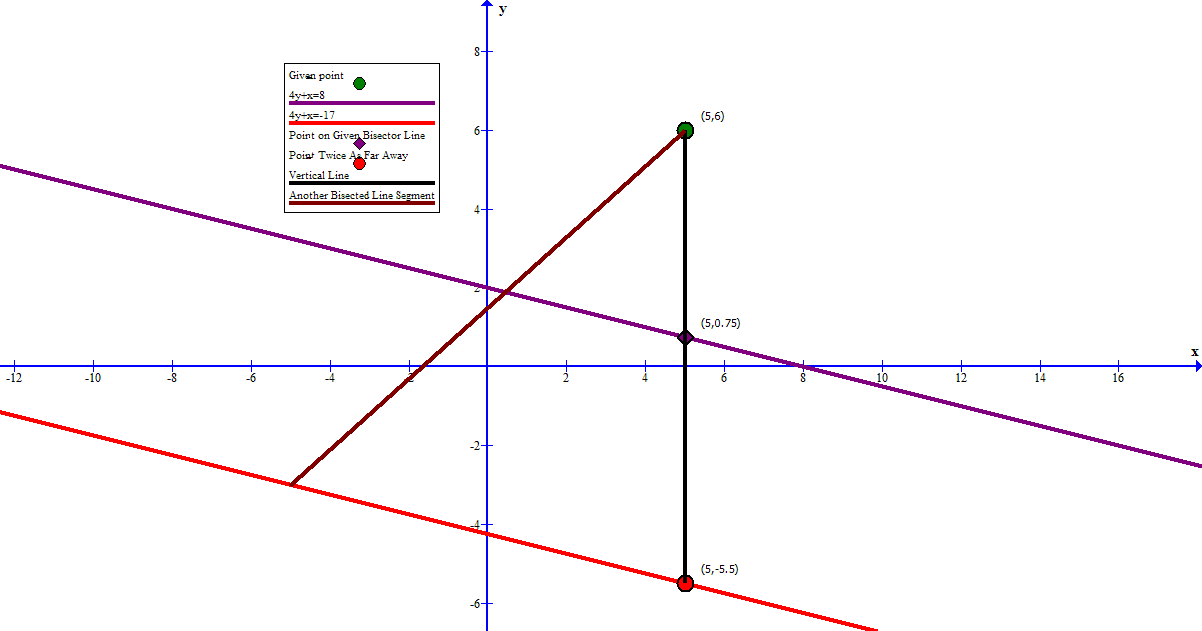A vertical line through #color(green)(""(5,6))# will intersect #color(purple)(4y+x=8)#
at #color(purple)(""(5,3/4))#
#color(purple)(""(5,3/4))# is #5 1/4# units below #color(green)(""(5,6)#
If #color(purple)(""(5,3/4))# is the bisect point of the vertical line,
the second end point must be #5 1/4# units lower than #color(purple)(""(5,3/4))#
That is the second end point must be at #color(red)(""(5,-5 1/2))#
The given line #color(purple)(4y+x=8)# bisects the vertical line segment between #color(green)(""(5,6))# and #color(red)(""(5,-5 1/2))#

Furthermore (based on similar triangles) any point on a line parallel to the bisector line #color(purple)(4y+x=8)# will also be bisected by #color(purple)(4y+x=8)#
#color(purple)(4y+x=8)# has a slope of #(-1/4)#
So all lines parallel to #color(purple)(4y+x=8)# will have a slope of #(-1/4)#
The equation for a line passing through #color(red)(""(5,-5 1/2))# with a slope of #(-1/4)# can be expressed in slope-point form as
#color(white)("XXX")color(red)(y- (-5 1/2) = -1/4(x-5))#
or after simplifying, as
#color(white)("XXX")color(red)(4y+x=-17)#

